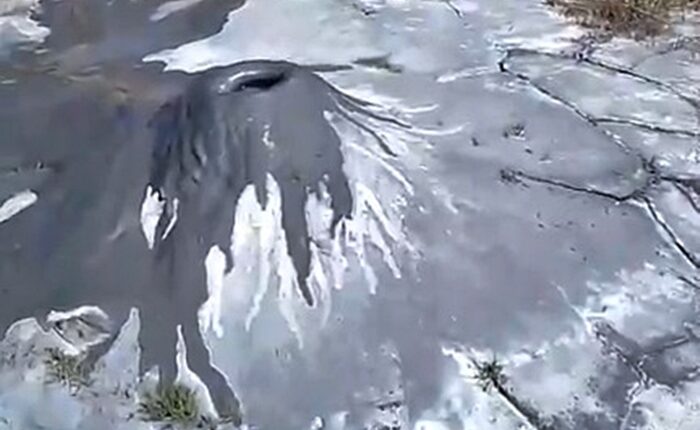Share this @internewscast.com
A VOLCANO touted as the smallest in the world has been discovered – and it’s shorter than a set of cricket stumps.
Mysterious substances were found oozing out of the tiny geological formation in the city of Cusco, southern Peru.
A group of locals stumbled across a raised, blackened mound around 60cm tall in the Peruvian mountains.
It looks like a small pimple in the earth‘s crust.
It has a shallow conical shape – just like classic volcanoes – and a crater at the peak.
Material has evidently been seeping from the top and down the sides, before solidifying to form a hard, dark casing.
The whole structure stretches over just a few square metres.
Locals reported that gases and other unknown substances were seeping from the mouth.
The villagers promptly declared it the “smallest volcano in the world”.
Wearing a traditional poncho, community leader, Arturo Mamani, dubbed it “The Eagle’s Eye”.
Mamani and his family left traditional offerings of coca leaves at the base as a gesture of respect.
The mountain town hit the headlines the following day, and a growing number of curious spectators visited to take a look.
After learning of the extraordinary feature, the authorities cordoned off the area and called in the experts.
Hernando Tavera, who leads the Geophysical Institute of Peru (IGP), clarified that The Eagle’s Eye is not truly a volcanic vent. Instead, it is a mud volcano, which is a small formation composed of earth, clay, and water.
He said it is a natural structure where mud, water, and dissolved gases emerge from lower levels of soil.
It does not involve magma or any volcanic activity.
Tavera described how this phenomenon happens: “It occurs when gases like methane, carbon dioxide, and others rise to the surface, bringing along clay sediments that mix with groundwater.
“The result is a mound with a central hole, a cone with a crater, which leads to it being considered a ‘volcano’ due to its shape.
“However, its origin, type of activity, and the materials it emits bear no relation to the active volcanoes found in the south of the country.”
While it doesn’t present a volcanic threat, Tavera cautioned that it might harm the environment, potentially leading to contamination of nearby water resources and agricultural areas.
The IGP is continuing to monitor the mud volcano, also known as a mud dome, to determine if it poses any kind of risk to the local community.























